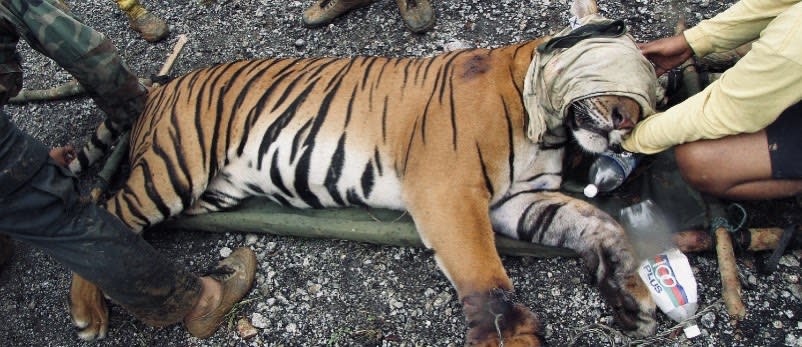Malaysia's tigers threatened by rampant snaring, global population stabilised: WWF

SINGAPORE — Malaysia’s tigers could disappear within two years if the current trend is not reversed, according to the Worldwide Fund for Nature (WWF).
Preliminary results from Malaysia’s ongoing first national tiger census suggest that the population has plummeted to less than 200 tigers currently, from an estimated 500 in 2003, said WWF-Singapore spokesperson Janissa Ng.
“This severe decline is largely a result of the snaring crisis across Southeast Asia that is decimating mammal populations in the region,” Ng added. In stark contrast, thousands of Malayan tigers once roamed the entire peninsula from the border with Thailand down to Singapore, which saw its last wild tiger killed in the 1930s.
Malaysia was the first country to champion a global goal – known as Tx2 – of doubling the world tiger population by 2022.
In conjunction with Global Tiger Day on Wednesday (29 July), here are facts about the world’s tiger population:
Malaysia’s tiger crisis

The deterioration of Malaysia’s tiger population comes at a time when the global tiger population has stabilised for the first time in a century.
“One of Southeast Asia’s most important remaining tiger landscapes, Belum-Temengor in Malaysia, experienced a 50 per cent decline in tiger numbers from 2009-2018 largely due to widespread snaring,” said WWF-Singapore in a report on 14 July concerning the region’s snaring crisis.
The report highlighted how snaring is driven by urban demand for wildlife meat, which is often seen as a delicacy in the region. The practice affects more than 700 of the region’s terrestrial mammal species, including the Asian elephant, saola (a type of bovine) and banteng.
“Snares are also the principal threat to tigers in the region, and a major contributor to the fact they are now presumed extinct in Cambodia, Laos and Vietnam. Without strong action, a snaring driven extinction wave could break across Asia,” said Stuart Chapman, who leads the WWF’s Tigers Alive Initiative, in the report.
Such snares often mean a slow, painful death for the animals indiscriminately caught in them.
To curb the decline in Malayan tigers, the WWF has worked to strengthen its community efforts in tiger landscapes, advocated for effective forest management as well as stepped up efforts to monitor and safeguard tiger habitats against poachers.
Ng said, “To do that, we work closely with the Orang Asli, indigenous people (members of WWF’s anti-poaching teams) who conduct regular, systematic patrols to deactivate snares and reduce poaching rates we need to urgently step up conservation.”
The good news

Thanks in part to efforts made to achieve the Tx2 goal, wild tiger numbers around the world have increased to an estimated 3,890 as of April 2016, from about 3,200 in 2010.
Other milestones achieved:
Nepal became the first country to achieve zero tiger poaching in 2013. Its tiger population jumped from 121 in 2009 to 235 in 2018.
Tiger numbers in India rose from 1,706 in 2010 to 2,967 in 2019.
The tiger population in the Russian Far East grew from an all-time low of 50 to around 450.
A total of 67 tiger sites have been registered across seven countries, four of which have become fully accredited in Nepal, Russia and India.
Those looking to play a part in the WWF’s tiger conservation efforts can refer to the Tiger Adoption website.
Stay in the know on-the-go: Join Yahoo Singapore's Telegram channel at http://t.me/YahooSingapore
More Singapore stories:
PM Lee's nephew Li Shengwu fined $15,000 for contempt of court
Indonesian woman arrested for abandoning her newborn baby in recycling bin at Tai Keng Gardens
Ex-Certis CISCO officer who shot pellets at crows and damaged resident's wall jailed



